You may struggle to provide your employees with opportunities for learning, especially when numerous team members from various departments seek to enrol into numerous training courses simultaneously. How can you beat that? A learning management system (LMS) is a shortcut to simplifying this process by monitoring and organising employee training activities.
Key insights
- The estimated number of LMS users in 2024 is 73.8 million and is still increasing.
- The use of technology in the education sector is growing, with 48% of students using desktop computers, 42% using smartphones, 33% using interactive whiteboards, and 20% using tablet devices.
- Large enterprises, comprising 30% of the LMS market, use these systems to standardise training courses and upskill their workforce.
- North America’s LMS market is anticipated to be the fastest growing, with expected revenues of USD 6.27 billion.
What can you do with the help of learning management systems?
Have you wondered why market giants consistently use LMS solutions? Learning management systems offer significant advantages for HR teams and business owners by providing a centralised platform to manage and oversee training and e-learning initiatives across the organisation.
LMS systems facilitate new hires’ onboarding process, helping streamline their official start to the company. They also help to establish and monitor employee objectives, allowing for the effective tracking of learner progress.
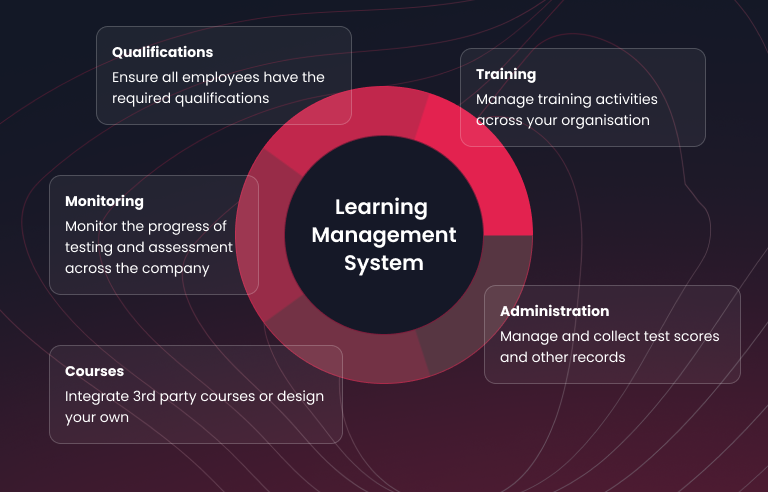
In addition to these functionalities, an LMS supports direct communication between managers and learners, streamlining engagement and interaction. It provides access to detailed analytics, helping identify skill gaps within the workforce and pinpoint employees needing additional support.
Explore how does technology benefit education?
There are 3 distinctions that influence the operation and cost of a learning management system.
Free vs. Commercial
Free versions often come with limited features and functionality, while commercial versions typically offer a more complex set of tools and capabilities.
Cloud-based vs. Installed
A cloud-based LMS stores its data on external servers, whereas an installed LMS keeps data within the organisation’s infrastructure.
Open-source vs. Proprietary
Proprietary LMS platforms require a subscription fee, while open-source options are free, customisable, and managed internally by the organisation.
Although learning management systems are commonly used for employee training, their application extends beyond business. Educational institutions, including schools, colleges, and universities, also make use of LMS features.
How can a learning management system help your business?
Wouldn’t it be great if you could simplify and improve the accessibility of the learning process for your employees? There are some benefits of LMS to consider:
- Deliver consistent training opportunities to all students, even if they learn at different speeds, by using an e-learning system.
- Use analytics to track performance and monitor how students interact with and engage in learning materials.
- Ensure students complete mandatory online training like fire safety, first-aid, and onboarding training.
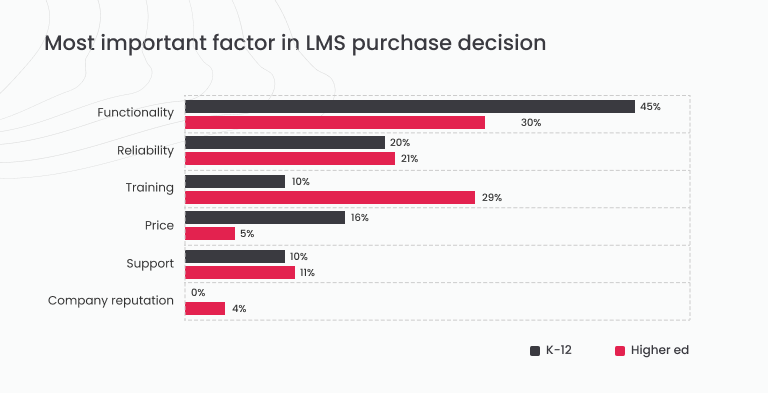
What are the top benefits of LMS?
Learning management systems have emerged as a powerful tool that shape how organisations and institutions deliver, manage, and track student and employee learning experiences. From personalised learning paths to real-time analytics, the benefits of learning management systems are vast and transformative. A good learning management system not only simplifies the administrative tasks of education but also enhances the learning experience by offering personalised content and real-time feedback.
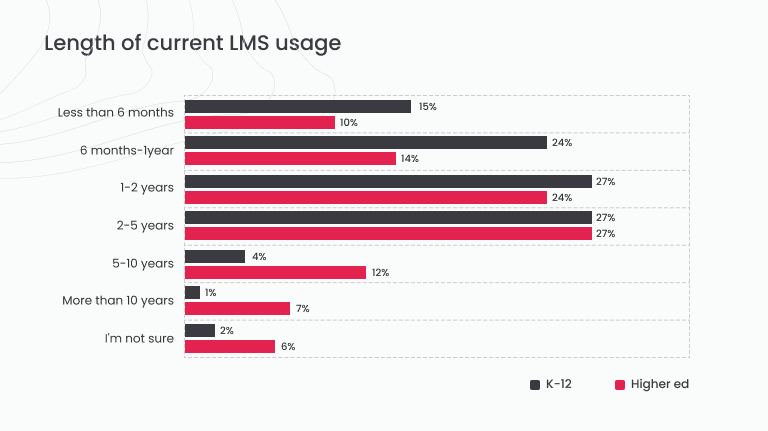
Streamlined preboarding and onboarding
Some recruiters believe that implementing a preboarding strategy through an online learning management system, which delivers documents remotely, enables new hires to confidently “hit the ground running.” By providing introductory training, orientation, health and safety guidelines, and company culture materials before an employee’s start date, new hires can arrive more prepared and less anxious on their first day.
Also, the best learning management systems enable remote onboarding to be an efficient online learning process that new hires can complete independently, freeing managers to focus on high-value in-person training or their primary responsibilities.
Using LMS platforms for onboarding allows new employees to view their training materials and track their progress, fostering confidence in a well-structured and thorough learning experience.
HR teams and managers can monitor a learner’s progress through the LMS dashboard, which is far less intrusive than chasing paperwork or constantly checking in with a potentially anxious new employee. With detailed records and notifications, leaders can address incomplete documents promptly and quickly identify if a new hire is showing signs of disengagement.
Holistic training management
Admit it, the LMS software application offers impressive advantages to learning coaches by simplifying the process of course creation and information distribution. Even if your company is too small to maintain a dedicated L&D department, an LMS can streamline your training programs, resulting in both time and cost savings across the organisation.
Without an LMS, there’s no uniform method for organising or delivering training courses. Companies often end up with a fragmented system where each department independently develops its online courses. This approach makes it difficult to ensure that everyone receives consistent information or standardise company processes.
When each department operates in isolation, the company might overspend on various training tools, leading to unnecessary expenses. Additionally, the learning experience can become disjointed due to the lack of cohesion in training methods.
By consolidating all training programs under a single LMS, you can enhance cost efficiency, create a unified learning experience, and minimise redundant training efforts. Employees will have a clear, centralised location to easily access the training they need.
Learn what is a data-driven organisation, and how to become one
Measurable returns on training investments
It is clear without saying that the initiative for new online learning programs should undergo C-suite approval. And that is the catch. An LMS can provide the data required to demonstrate your training program’s return on investment.
Proving the ROI of training can be difficult when you only have qualitative data and instances. Unfortunately, this is often the limit of what in-person training programs offer. Without a comprehensive system to gather and analyse training and employee performance data, many learning managers find it hard to show that their training efforts are making a significant impact.
At this point, most LMS software applications include analytical features that can strengthen your case for increased training budgets.
With a basic LMS, you can track metrics like course completion rates and link them to changes in performance. More advanced LMS platforms offer additional valuable data, such as time spent on educational courses, student satisfaction scores, and opportunities to provide feedback.
Some even integrate with other systems, like CRM tools, allowing you to demonstrate a direct, real-time connection between training programs and improved sales performance. Sounds impressive, right?
Improved employee satisfaction rates
An LMS can be important in developing more effective online learning program that attracts and retains top industry talent.
Employee turnover is a growing concern, with nearly 25% of workers considering leaving their jobs at any time. This high level of turnover results in an annual collective loss of $600 billion due to decreased productivity and replacement costs.
Although these statistics are alarming, there is an effective strategy to address employee attrition: offering substantial learning and development opportunities. Employees cite for changing jobs primarily because of the lack of career-development options.
Strong remote learning programs are directly linked to improved employee retention. LinkedIn for Learning reports that 94% of employees would remain with a company longer if they felt their employer was committed to their career growth.
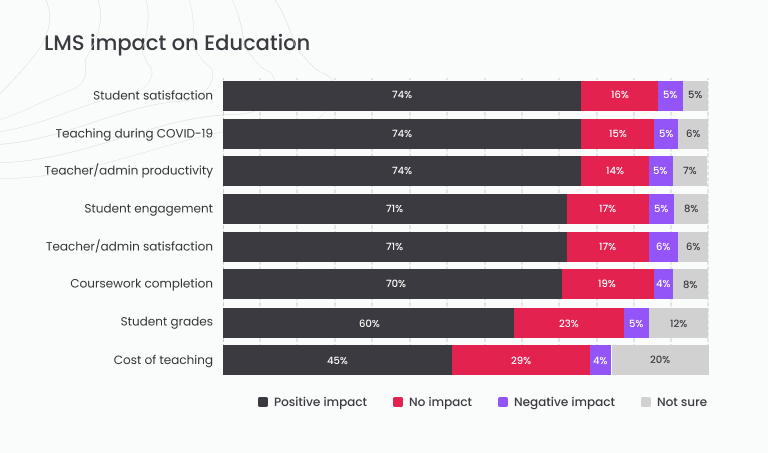
An LMS can help you create these comprehensive learning programs and encourage continuous learning among teams. By developing structured learning paths, you enable employees to enhance their skills and advance their careers, thereby increasing retention and satisfaction.
Unified knowledge base of best practices
An LMS also serves as a valuable repository for a company’s best practices and knowledge base. Instead of relying on infrequent and expensive training sessions, departments and experienced employees can continuously share their expertise through the LMS.
This knowledge can be organised into training modules and programs, which are then uploaded to the LMS and incorporated into the development process for other employees. This approach promotes a collaborative culture and ensures that critical expertise and best practices are retained within the company, even if a key employee departs. Ultimately, this is one of the significant advantages of adopting a learning management system for businesses of all sizes.
Visualised team qualification
The best learning management systems track and document employees’ qualifications and experience, updating records with each completed training program, document, webinar, quiz, or individual session conducted through the LMS.
This visibility of employees’ strengths helps company leaders make informed decisions about talent deployment and potential internal promotions. Conversely, an LMS can highlight employees who need additional training or possess skill gaps, enabling managers to address training needs more effectively. Additionally, training metrics can be integrated with your bonus system, providing objective data to fill gaps in performance evaluation.
Soft skills assessment
In recent years, the most effective method for evaluating soft skills has been the 360-degree performance appraisal, which involves gathering feedback from everyone interacting with an employee. However, this approach is often resource-intensive and can take several months to complete.
Advanced LMS platforms feature integrated 360-degree feedback assessment modules. These systems streamline the process, allowing you to complete evaluations within a single day and generate detailed competency radar charts that clearly display employees’ strengths and weaknesses.
With these strategic insights, you can use the LMS to design targeted activities to address any identified gaps. For example, if the marketing department scores poorly in creative thinking, you can arrange a series of training sessions to improve this area. The LMS will track the employees’ progress during these sessions and subsequent evaluations and job performance, providing a clear picture of the return on investment from these training efforts.
Training team skills
Roles such as sales often experience high turnover, which can impact overall revenue generation as new salespeople may lack the necessary skills, knowledge, or understanding of the brand’s voice.
A training management system offers significant advantages by enabling interactive role-playing exercises based on real-world scenarios, such as handling impatient, dissatisfied, or angry customers—typical situations in customer service and sales.
For example, you can track a sales employee’s progress through an LMS, including their performance in role-playing exercises designed to address various challenges. This allows you to confidently assess when an employee is fully prepared to engage effectively with customers.
Customer education
Suppose your product is part of another company’s offering or is complex and requires customer training to maximise its ROI. In that case, face to face training can be expensive and challenging to scale nationally or globally. So what can you do about it?
An LMS offers a solution by allowing you to create your product training materials once, upload them to the system, and then provide access to your customers or partners. If your product evolves and some training content becomes outdated, you can swiftly update the material online, avoiding the costs associated with redesigning and reprinting brochures.
Multimedia learning
These systems enable businesses and educational institutions to develop rich multimedia content that is both exhaustive and practical. By incorporating video, images, audio, and text, these tools enhance the process of acquiring new skills or vital information. Additionally, learners can interact with their instructors and peers through chat platforms and online forums, fostering a more collaborative, engaging, and personalised learning experience.
Recently, Altamira completed the discovery of an app solution that offers a fun and engaging age-appropriate curriculum for early learners in literacy, numeracy, science, and social studies.
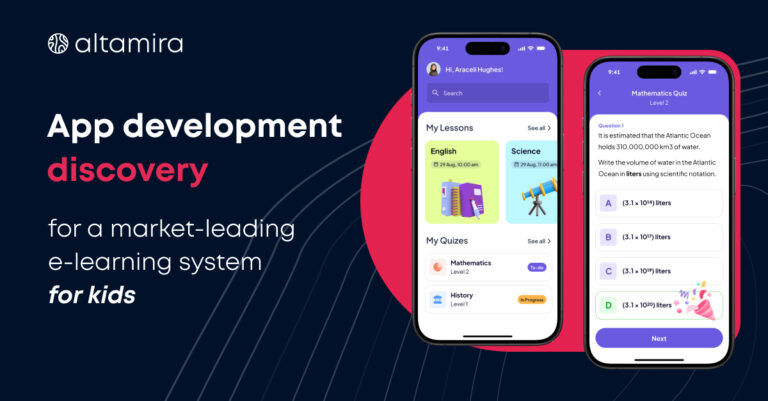
Our Client identified a need to streamline their learning process and needed assistance elaborating an idea, checking its viability, and finding the necessary technology to make it work.
At the end of the process, our team provided the Client with:
- Software requirement specifications for all user workflows, all use cases for developing an MVP, and wireframes of all the screens/flows needed.
- Technology stack
- Product functionalities
- Detailed architecture definition
- Wireframes
- User journeys
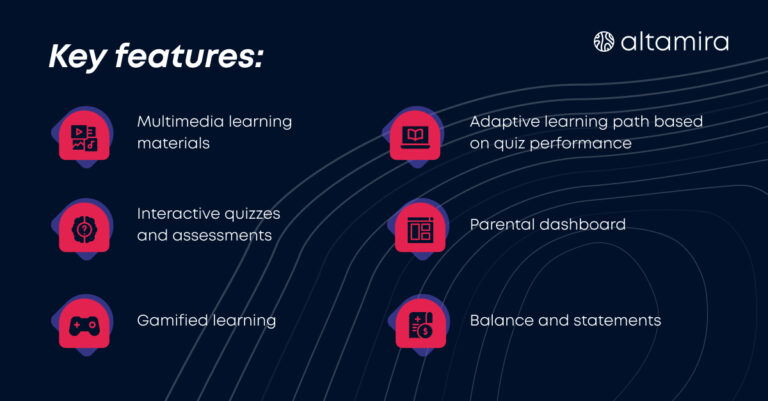
Now, after gathering all the specifications, building the app logic, and setting out the project scope, our team is jumping into the development phase, driven to transform concepts into tangible results.
The final words
In a nutshell, organisations across various industries can easily enhance employee skills and improve knowledge retention on a regular basis throughout their employees’ careers with the help of LMS. However, you have to conduct thorough research and choose an LMS or develop from the ground up a software that aligns with the specific learning needs of the organisation before making an investment.
How can we help you?
At Altamira, we design and develop smart EdTech software that drives tangible business outcomes among learners. We think beyond the boundaries of the ordinary, being creative, accessible, and inclusive. By bridging education and technology, we empower learning with brand-new solutions.
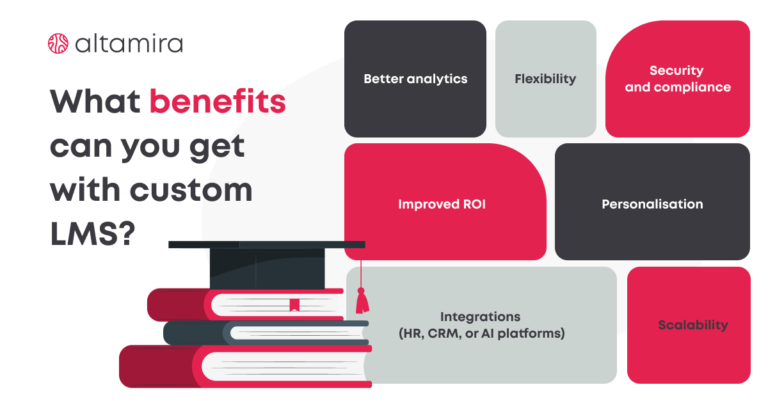
In addition, we consistently develop approaches that can help us compress the software development lifecycle (SDLC) – develop quicker without losing quality and stay within the budget.
Key challenges we address
- Outdated educational methods
- Broken collaboration between peers and educators
- Passive learning models
- Lack of personalisation
- Cost inefficiency in educational delivery
- Data breaches and unauthorised access
- Vague learning experience
Looking for a software development partner to bring your idea to life? Contact us to get a free expert consultation.






